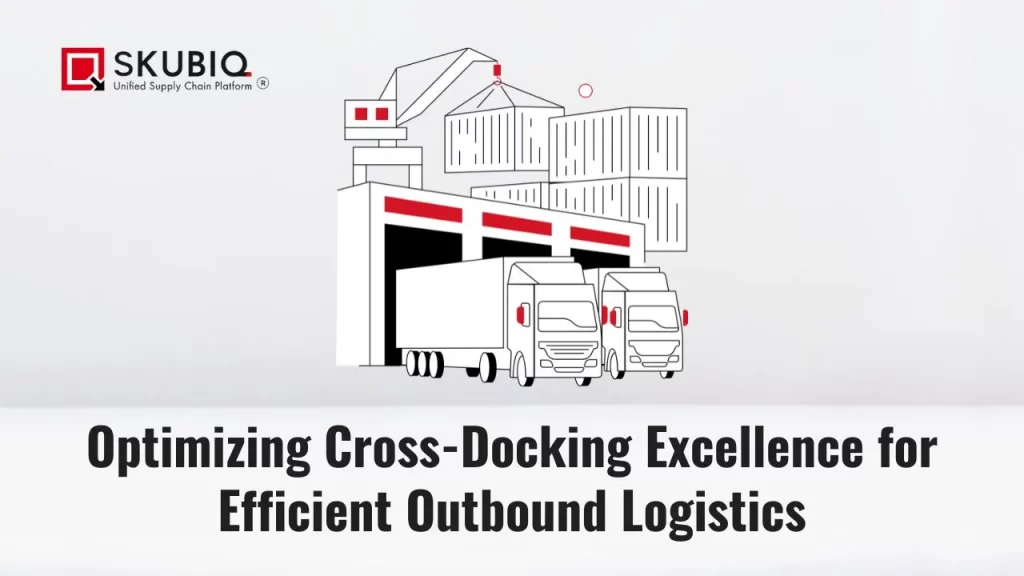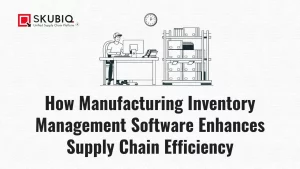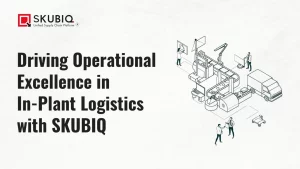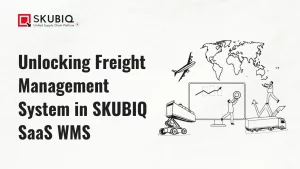Efficient outbound logistics is the heartbeat of a successful supply chain. Are you looking to streamline your warehouse operations and improve your logistics strategy? Cross-docking could be the game-changer you need. This article will guide you through optimizing cross-docking excellence for efficient outbound logistics, making your operations more seamless and cost-effective.
Cross-docking isn’t just a buzzword; it’s a powerful strategy that can revolutionize your outbound logistics. Imagine your warehouse as a bustling hub where products move swiftly from inbound to outbound with minimal handling and storage time. This article explores the ins and outs of cross-docking, providing practical tips to optimize this process for maximum efficiency.
Understanding Outbound Logistics
Outbound logistics is all about getting products from your warehouse to your customers efficiently. It involves everything from order processing to transportation. Effective outbound logistics ensures timely delivery, reduces costs, and enhances customer satisfaction. But how can you make this process more efficient?
The Concept of Cross-Docking
Cross-docking is like a relay race where goods are passed from one point to another without stopping. In a traditional warehouse setup, products are stored until needed. With cross-docking, products are received, sorted, and shipped out almost immediately. This reduces storage costs and speeds up the delivery process.
Types of Cross-Docking
- Pre-Distribution Cross-Docking: Products are sorted and consolidated before reaching the warehouse.
- Post-Distribution Cross-Docking: Products are sorted and consolidated after arriving at the warehouse.
Benefits of Cross-Docking
Why should you consider cross-docking? Here are some compelling benefits:
- Reduced Storage Costs: By minimizing the time products spend in the warehouse, you cut down on storage expenses.
- Faster Delivery: Cross-docking accelerates the delivery process, ensuring that customers receive their orders promptly.
- Improved Inventory Management: With fewer products in storage, inventory management becomes more straightforward.
- Enhanced Supply Chain Efficiency: Streamlined operations lead to a more efficient supply chain overall.
Key Components of an Efficient Logistics Function
An efficient logistics function is like a well-oiled machine. It requires careful planning, coordination, and execution. Here are some key components to focus on:
- Accurate Forecasting: Predicting demand accurately to ensure you have the right products at the right time.
- Effective Communication: Keeping all stakeholders informed and aligned.
- Robust IT Systems: Leveraging technology to track and manage logistics operations.
Effective Warehouse Layout Design
Your warehouse layout plays a crucial role in optimizing cross-docking. Think of it as a well-organized kitchen where everything is within reach. A well-designed layout ensures smooth movement of goods, reduces handling time, and minimizes errors.
Tips for Designing an Efficient Warehouse Layout
- Optimize Space Utilization: Make the most of your available space without overcrowding.
- Streamline Processes: Ensure that goods flow seamlessly from inbound to outbound areas.
- Implement Safety Measures: Prioritize safety to prevent accidents and ensure smooth operations.
Importance of Inventory Management
Inventory management is like keeping your kitchen pantry organized. You need to know what’s in stock, what’s running low, and what needs replenishing. Efficient inventory management ensures that you always have the right amount of stock without overstocking or stockouts.
Strategies for Effective Inventory Management
- Regular Audits: Conduct regular inventory checks to ensure accuracy.
- Automated Systems: Use technology to track inventory levels in real time.
- Safety Stock: Maintain a buffer stock to handle unexpected demand.
Strategic Planning for Logistics
A solid logistics strategy is the backbone of efficient outbound logistics. It involves planning and coordinating all activities to ensure timely delivery of products. Without a clear strategy, you risk delays, increased costs, and dissatisfied customers.
Elements of a Successful Logistics Strategy
- Goal Setting: Define clear objectives for your logistics operations.
- Resource Allocation: Allocate resources efficiently to meet your logistics goals.
- Continuous Improvement: Regularly review and improve your logistics processes.
Technology in Logistics
Technology is a game-changer in logistics. It provides real-time visibility, automates processes, and improves accuracy. From Warehouse Management Systems (WMS) to Transportation Management Systems (TMS), technology can significantly enhance your logistics operations.
Benefits of Technology in Logistics
- Real-Time Tracking: Monitor the movement of goods in real time.
- Data-Driven Decisions: Use data analytics to make informed decisions.
- Automation: Automate repetitive tasks to reduce errors and increase efficiency.
Staff Training and Management
Your staff is the driving force behind your logistics operations. Proper training ensures they understand cross-docking processes, use technology effectively, and follow safety protocols. Investing in staff training leads to more efficient operations and a safer work environment.
Key Areas for Staff Training
- Cross-Docking Procedures: Train staff on the specifics of cross-docking.
- Technology Use: Ensure they are proficient in using logistics technology.
- Safety Practices: Emphasize the importance of safety in all operations
Measuring Success in Outbound Logistics
How do you know if your outbound logistics are efficient? Measuring success involves tracking key performance indicators (KPIs) such as delivery times, order accuracy, and customer satisfaction. Regularly reviewing these metrics helps you identify areas for improvement and ensure that your logistics operations are on track.
Essential KPIs for Outbound Logistics
- On-Time Delivery Rate: The percentage of orders delivered on time.
- Order Accuracy: The percentage of orders delivered without errors.
- Customer Satisfaction: Feedback from customers on their delivery experience.
Conclusion
Optimizing cross-docking excellence is a powerful strategy for efficient outbound logistics. By reducing storage time, speeding up deliveries, and improving overall supply chain efficiency, cross-docking can transform your warehouse operations. Implementing effective logistics strategies, leveraging technology, and investing in staff training are essential steps toward achieving this goal.



